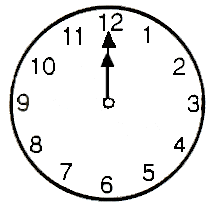Tic Tic Tic
Logic
Level
2
How many times in a day (24 hours) does the minutes hand and the seconds hand of the clock meet at the same point (as shown below)?

2048
1200
1440
3600
1416
This section requires Javascript.
You are seeing this because something didn't load right. We suggest you, (a) try
refreshing the page, (b) enabling javascript if it is disabled on your browser and,
finally, (c)
loading the
non-javascript version of this page
. We're sorry about the hassle.
In one minute the minutes hand and the seconds hand of the clock meet for 1 time.
So, in 1 hour the minutes hand and the seconds hand of the clock meet for 60 times.
In, 1 day there are 2 4 hours. So the minutes hand and the seconds hand meet for 2 4 × 6 0 = 1 4 4 0 t i m e s .
Therefore, in 1 day the minutes hand and the seconds hand meet for 1 4 4 0 times.